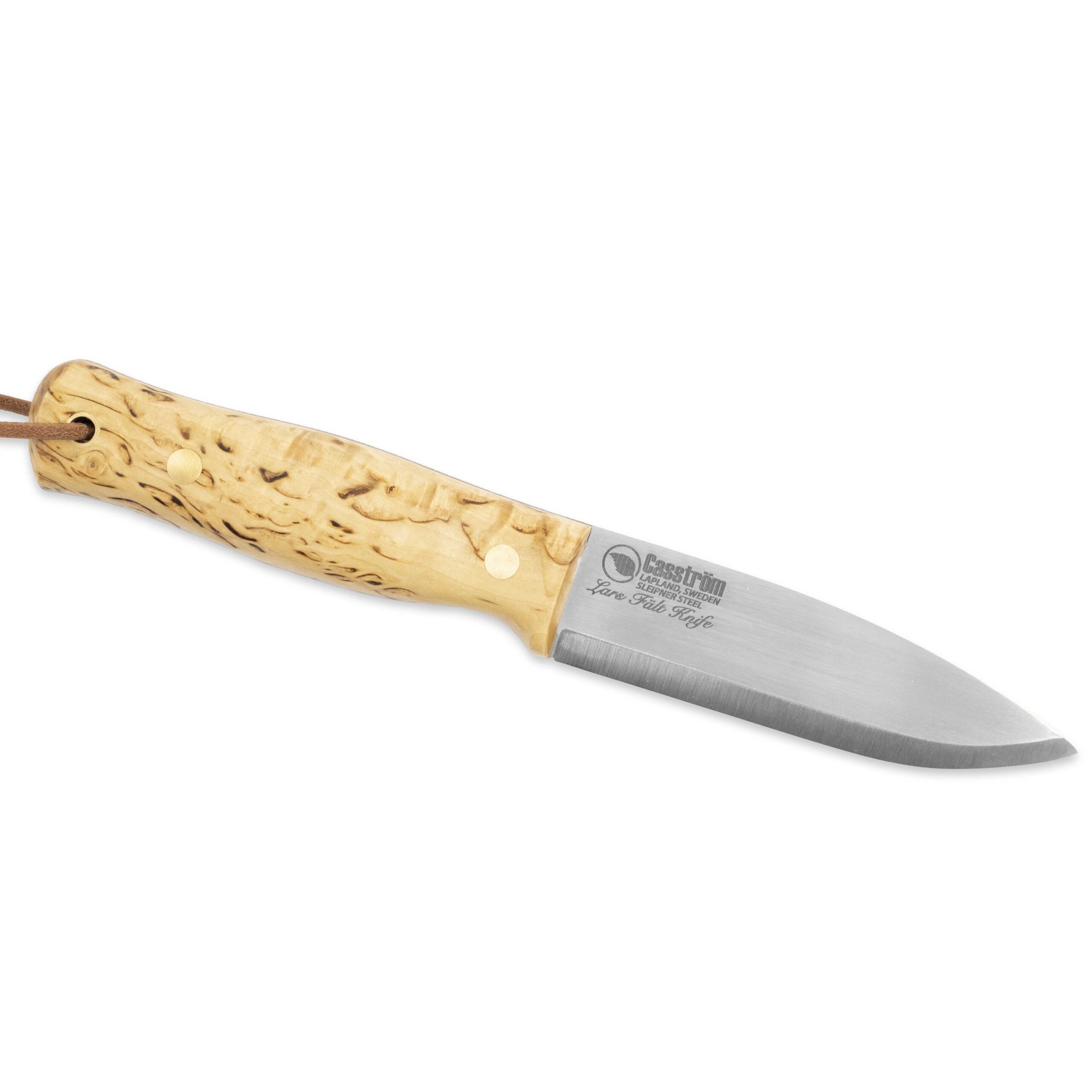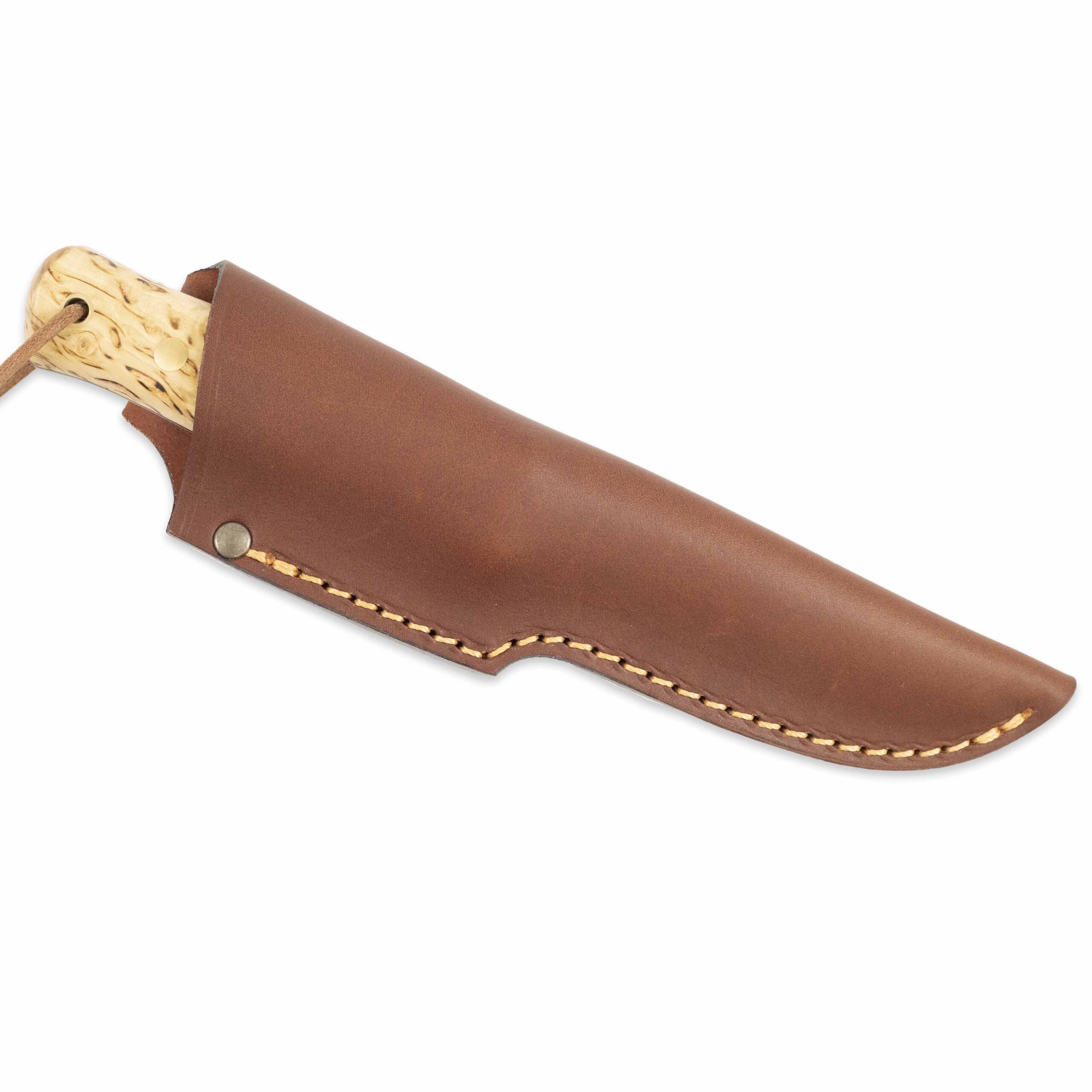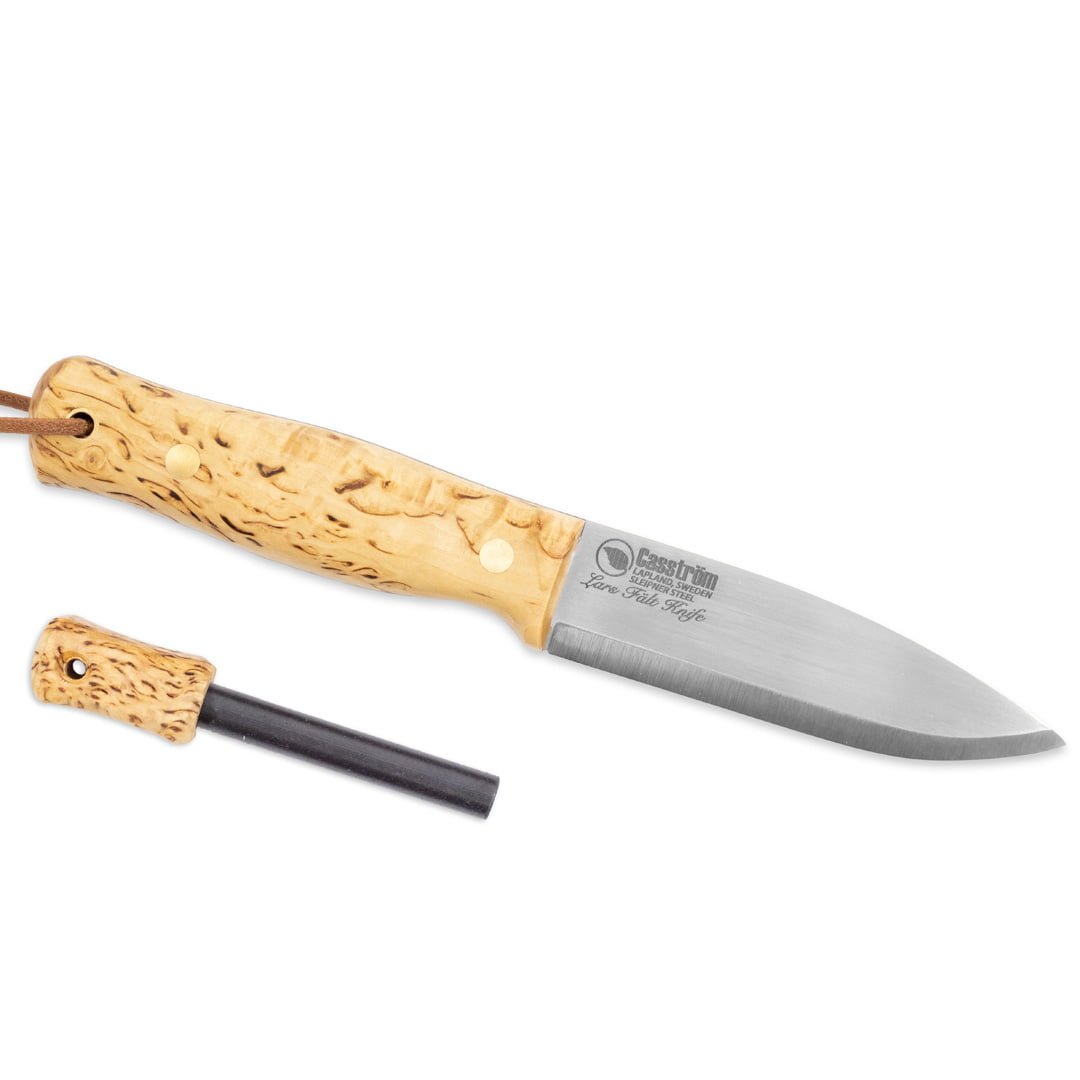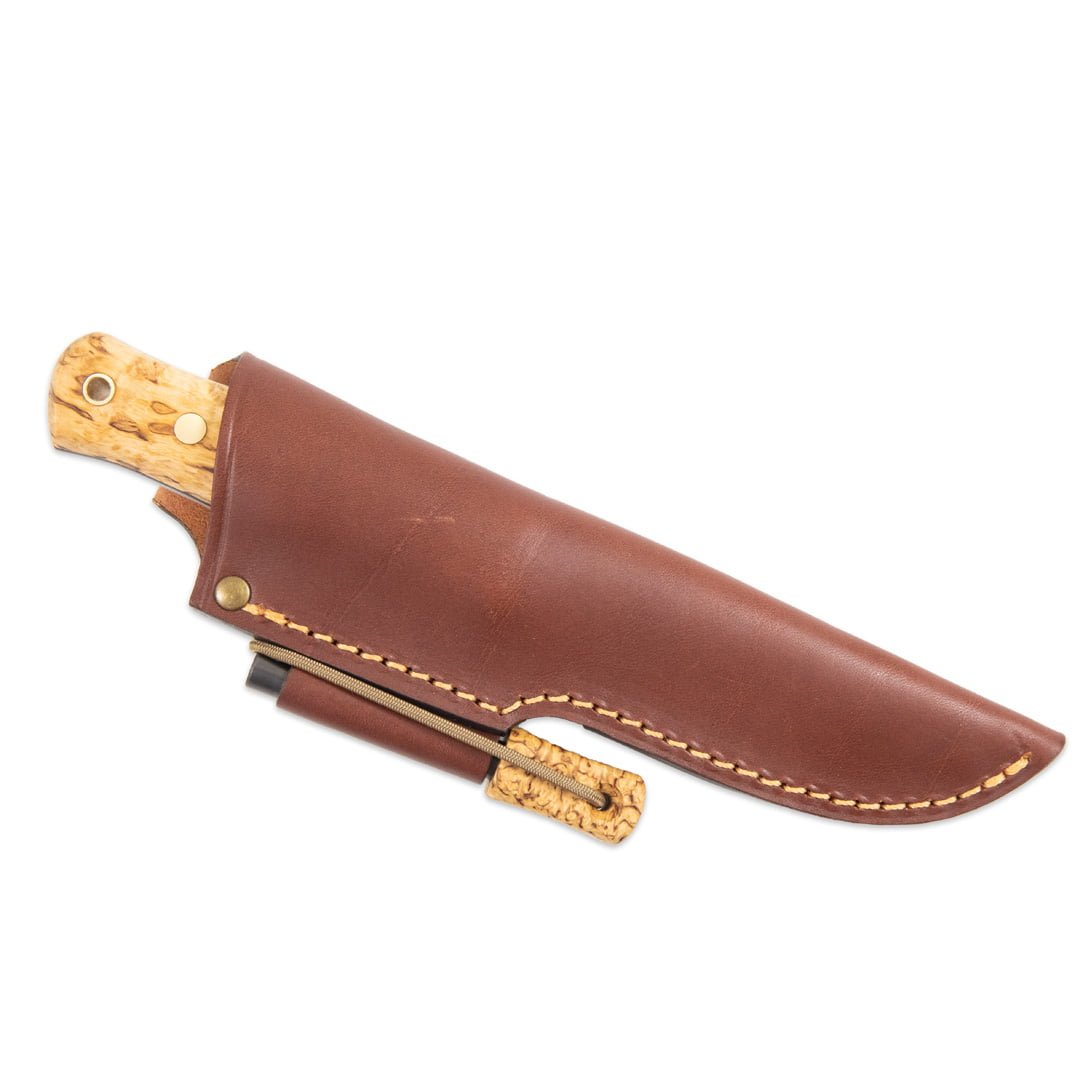Sleipner steel allows the knife to keep a sharp edge very well, for longer and also during very hard use without chipping to the extent that is often seen in stainless and high-alloy steels. The chemical composition allows tempering to a high hardness with retained ductility (ability to deform without breakage) and toughness while still being relatively easy to sharpen and capable of obtaining a very sharp and durable edge. Due to the 8% chromium content, it will resist corrosion to some degree compared to regular carbon steel (around 0.5% Cr) but not as well as stainless steel (13% Cr). Therefore, the blade should be dried after use and protected with oil or wax when stored in a high-humidity environment.
Sleipner steel belongs to the 8% Chromium die steel category and was developed to have toughness close to simple tool steels like A2 but with much higher wear resistance, closer to D2. Uddeholm Sleipner is mainly used by Casström, which adds a cryogenic treatment cycle at subzero temperatures with the use of liquid nitrogen after quenching to make the blades harder and improve the steel structure.
Composition: C 0.9% Si 0.9% Mn 0.5% Cr 7.8% Mo 2.5% V 0.5% (~HRC 60)
Showing all 2 resultsSorted by popularity
-
Brand: Casström
Casström Lars Fält Knife with Fire Striker
Select options This product has multiple variants. The options may be chosen on the product page 1.024,75 leiAvailable on backorder (shipping in 2-7 weeks)





